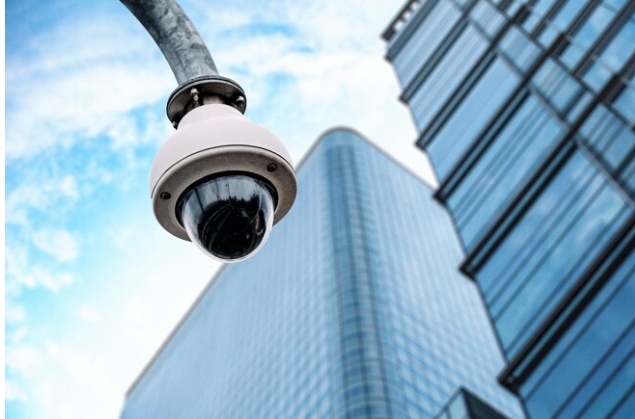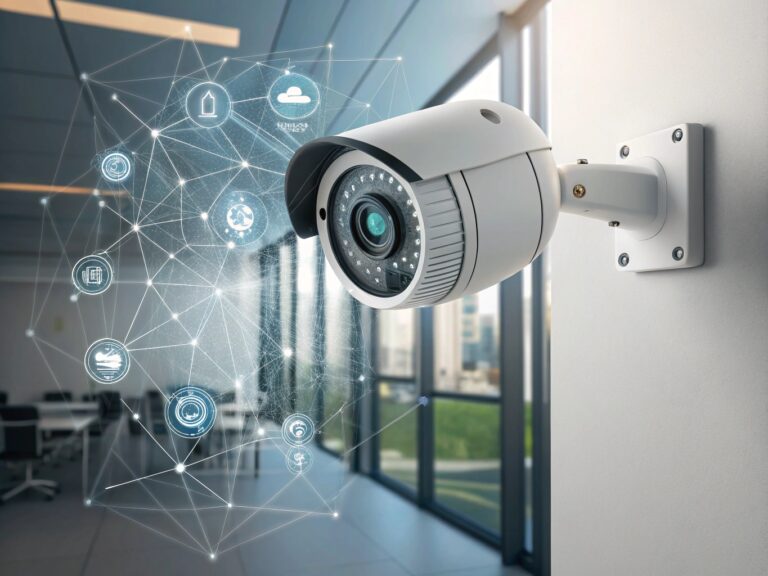A typical security camera is a device that captures video footage of a specific area to monitor activity for the purposes of ensuring security. These cameras are placed in homes, businesses, public places, and other locations where security is a priority. Traditional security cameras simply record what happens, allowing people to review footage if something goes wrong. However, modern security cameras have become more advanced, with some using artificial intelligence (AI) to analyze what they see in real time.
But does this mean that a security camera itself is artificial intelligence? The short answer is no. A security camera is just hardware—it is a tool that captures video. AI, on the other hand, is software that can be added to a camera system to make it smarter. AI does not replace the camera; it works with it to achieve the common goal. The camera provides the video, and AI, in turn, helps interpret what is happening in that video.
How AI Enhances Security Cameras
AI in security cameras is designed to recognize patterns, detect unusual activity, and even identify people, vehicles, or objects. This is done through machine learning, a process where software improves over time by analyzing more data. The AI learns what normal behavior looks like, so when something unusual happens, it can trigger an alert.
For example, if a security camera is placed at the entrance of a building, an AI system can learn to recognize the difference between employees who enter the building every day and someone who has never been there before. If an unknown person tries to enter at a time when no visitors are expected, the system can send a warning.
Key Features of AI-Powered Security Cameras
- Object Recognition: AI can identify whether a moving object is a person, a car, an animal, or something else. This helps reduce false alarms caused by irrelevant motion, like tree branches swaying in the wind.
- Facial Recognition: Some AI cameras can detect and remember faces, distinguishing between authorized personnel and strangers. This feature is often used in workplaces, schools, and high-security areas.
- Behavior Analysis: AI can analyze movement patterns to determine what is normal and what is suspicious. For example, if someone is walking back and forth near a store’s entrance late at night, the system might flag it as unusual behavior.
- License Plate Recognition (LPR): AI-powered cameras can scan and read vehicle license plates, checking them against a database of known or suspicious vehicles.
- Crowd Monitoring: AI can track the number of people in a certain area, helping to manage large gatherings and improve safety.
How AI Processes Video from Security Cameras
AI doesn’t “see” video the way humans do. Instead, it breaks down images into data points and patterns. When a security camera records video, AI software analyzes the footage frame by frame. It looks for key characteristics, such as shapes, colors, and movement. It compares these characteristics to its database to determine what it is looking at.
For example, to recognize a person, AI might analyze:
- Shape: A human body typically has a head, torso, arms, and legs.
- Movement: People walk in a certain way, while animals move differently.
- Size: A person standing close to the camera appears larger than someone further away, but AI adjusts for this.
AI assigns probability scores to each observation. If all the factors strongly suggest that the object in view is a person, the system confirms it. If the probability is too low, it might classify the object as something else, like an animal or a shadow.
Rule-Based AI vs. Self-Learning AI in Security Systems
Not all AI security cameras work the same way. Some use a rule-based system, while others rely on behavioral analytics.
- Rule-Based AI: A human sets specific rules for the AI to follow. For example, a security system might be programmed to sound an alarm if a person enters a restricted area after midnight. The AI doesn’t decide for itself—it just follows the rules created by people.
- Self-Learning AI (Behavioral Analytics): Instead of relying on pre-set rules, this type of AI watches and learns over time. It builds an understanding of normal patterns and can detect when something unusual happens, even if no rule has been programmed for that situation.
For example, in a parking lot, a rule-based AI might be programmed to recognize cars and people but ignore small animals. A self-learning AI, however, might notice that certain cars arrive and leave at specific times and flag a car that arrives unexpectedly at 3 a.m. as suspicious.
SentiVeillance: AI Integration for Security Cameras
One example of AI-driven surveillance capabilities is the SentiVeillance platform. This software enhances video security systems by using AI-powered facial recognition, object tracking, and behavioral analysis. Basically, this product upgrades simple cameras without any AI features into those that are fully integrated with the latest and most capable AI-based monitoring and surveillance capabilities.
This system can work with multiple cameras at once, analyzing video footage in real time to detect faces, track people, and classify objects such as vehicles or pedestrians.
What SentiVeillance Can Do:
- Detect and recognize faces in a live video feed
- Track multiple people and objects at the same time
- Identify faces against a watchlist, useful for security and law enforcement
- Monitor restricted areas and alert security teams when unauthorized individuals enter
- Recognize objects like cars, people, and groups to help manage crowds and traffic
SentiVeillance is especially useful for businesses, government agencies, and smart city applications where large-scale monitoring is required.
AI Security Cameras: Benefits and Concerns
Advantages of AI in Surveillance
- Fewer False Alarms: AI can distinguish between real threats and harmless movement, reducing unnecessary alerts.
- Faster Response Time: Security teams can act quickly when an AI system detects an actual security breach.
- Enhanced Safety: AI improves public safety by identifying threats before they escalate.
- Data Insights: AI cameras can analyze trends, such as how people move through a building, helping businesses improve efficiency.
Privacy and Ethical Concerns
Despite its benefits, AI surveillance also raises concerns:
- Privacy Issues: AI security cameras collect large amounts of data, raising concerns about how this information is stored and used.
- Surveillance Overreach: Some worry that widespread AI monitoring could lead to excessive surveillance, affecting personal freedoms.
- Data Security: If AI-powered surveillance systems are hacked, sensitive information could be exposed.
Governments and organizations must balance security benefits with ethical considerations by implementing clear policies on AI surveillance use.
Conclusion: AI and Security Cameras Work Together
A security camera is not artificial intelligence, but AI can make security cameras smarter. AI software processes video footage, identifies important details, and helps security teams respond to real threats. Technologies like SentiVeillance allow businesses and governments to integrate AI into their security systems, improving safety and efficiency.
As AI continues to evolve, security cameras will become even more advanced, offering greater accuracy and new features. However, it is also important to address privacy concerns and ensure responsible AI use in surveillance.
In the end, AI is a tool—it is not the camera itself or any part of its conventional hardware such as optics or digital storage, but an intelligent system that helps traditional cameras work more effectively, using smart features.
If you are interested in this topic, we suggest you check our articles:
- The Role of AI in Retail Image Recognition
- Revolutionary 3D Scanning Technology Transforms AR/VR Experiences
- The Impact of AI Biometrics on Authentication and Identification
Sources: Reolink, Wikipedia, Fulcrum Biometrics


